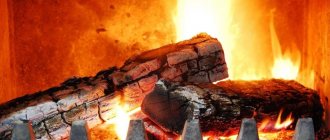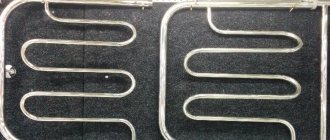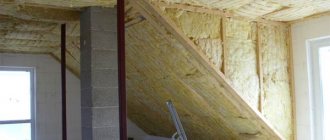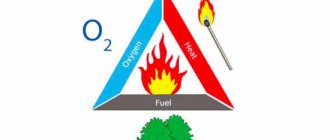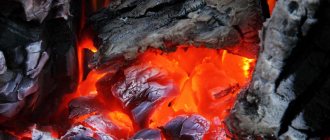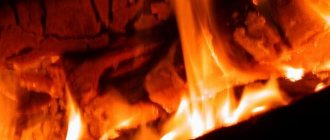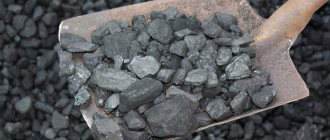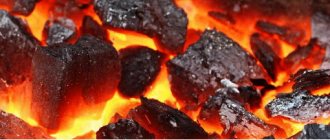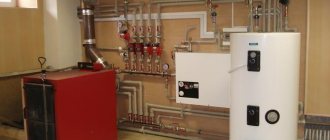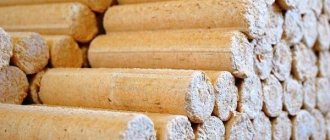What is the combustion temperature of wood?
It’s hard to meet such a person who has not encountered wood burning in his life. Most people have gone on a hike at least once, which is not complete without lighting a fire. Some have a lot of experience in lighting house stoves and sauna stoves. Most people have tried wood burning at least once in their lives with a specialized device or a magnifying glass.
But not all people wondered at what temperature wood could ignite. Is there a difference between the combustion temperature of different types of wood? The reader has a unique opportunity to delve into these issues and obtain a lot of valuable information.
How did man master fire?
Fire was known to people who lived in the Stone Age. People absolutely could not always make fire on their own. Man's first acquaintance with the combustion process, according to scientists, happened empirically. Fire, obtained from a forest fire or conquered from a neighboring tribe, was protected as a very expensive thing that people had.
Over the course of some time, people have noticed that certain materials have qualities that are more conducive to combustion. For example, dry grass or moss can ignite with just a few sparks.
Over the years, again empirically, people learned to make fire using improvised means. Historians call man’s first “lighter” tinder and flint, which produced sparks when they struck each other. Later, humanity learned to make fire using a twig placed in a special recess in the wood. The ignition temperature of the wood was achieved due to the intensive rotation of the end of the twig in the recess. Many Orthodox communities continue to use these methods today.
Much later, in 1805, the French chemist Jean Chancel invented the first matches. The discovery became widespread, and a person could safely draw fire if necessary.
Mastering the combustion process is considered a decisive factor that gave impetus to the formation of civilization. In addition, in the near future, combustion will remain such an argument.
How to speed up the process of wood decay
Sometimes the susceptibility of wood to rot can be regarded as a positive thing. If you know how to accelerate decay, you can use this feature of natural material to your advantage and force the fall of a tree or the removal of a stump.
Tips to speed up decay to remove dead trees and stumps are:
- Drill more holes in them a couple of centimeters deep. Insects will gather in these crevices, and moisture will accumulate during rainfall. Thus, the decay of the cellulose will accelerate, and the wood will decay much faster.
- You can speed up decay by sprinkling spores or pieces of mushrooms taken from already rotten wood of the same type onto a tree or stump.
- Water the soil around the unwanted trunk with nitrogenous fertilizers, which will provoke the development of parasitic fungi. After some time, you can feed the fungi with sweet water to stimulate the growth of their population.
All of these tips can be used at the same time. And, of course, you should water the trees more often and moisten the stumps. Then favorable results will not take too long to arrive.
The best posts
- How to make a table lamp with your own hands?
- Prospects for a small balcony: interior solutions
- Easter symbols that can be interestingly played out in the interior
- Do-it-yourself hipped roof for a gazebo, how to design and build it
- Useful decor for the bathroom that you can make with your own hands
- How to make children's gazebos for kindergarten with your own hands
- How to knit a scarf with knitting needles from a corner with a detailed description and diagrams
- Mint wallpaper in the interior
What is the combustion process?
Combustion is a process at the boundary of physics and chemistry, consisting in the transformation of a substance into the final product. At the same time, thermal energy is released in huge quantities. The combustion process is mainly accompanied by the emission of light, which is called a flame. Also, during the combustion process, carbon dioxide is released - CO2, an excess of which in an unventilated room can lead to headaches, suffocation and even death.
For the process to proceed normally, a number of mandatory conditions must be met.
First of all, combustion can only happen if there is air. In a vacuum, the combustion process is unrealistic.
Second, if the area in which combustion occurs is not heated to the ignition temperature of the material, then the combustion process will end. For example, the flame will go out if you immediately throw a large log into a newly lit stove without allowing it to heat up on very small firewood.
Third, if the subjects of combustion are damp and highlight liquid vapors, and the burning rate is still low, the process will also end.
Heat capacity of firewood: table of main species
Looking at different types of wood, in the end, you can notice some differences: some of them burn very brightly and perfectly, while you feel a strong warmth, while others just barely smolder, leaving behind almost no heat. The point here is not at all in their dryness or humidity, but in their structure and composition, as well as the structure of the tree.
However, it is worth paying attention to the fact that wet wood ignites and burns very poorly, leaving a large amount of ash, which has a bad effect on the chimney; they become very clogged.
The highest heat output is found in oak, beech, birch, larch or hornbeam, but these species are the most unprofitable and expensive. Therefore, they are used very rarely and only in the form of shavings or sawdust. The lowest heat transfer is found in poplar, alder and aspen. There is a table showing the main breeds and their heat output.
Table of some main rocks and their heat transfer:
- Ash, beech – 87%;
- Hornbeam – 85%;
- Oak – 75, 70%;
- Larch – 72%;
- Birch – 68%;
- Fir – 63%;
- Linden – 55%;
- Pine – 52%;
- Aspen – 51%;
- Poplar – 39%.
Conifers have a low combustion temperature, so they are best used for lighting an open fire (bonfire). However, pine wood catches fire very quickly and can smolder for a long time, since it contains a huge amount of resins, so this species is able to retain heat for a long time. But still, it is better not to use coniferous wood for heating, since its combustion produces a lot of flue gases, which settle in the form of soot on the chimney and it has to be cleaned, as it quickly becomes clogged.
At what temperature does wood ignite?
Pyrolysis - the process of wood rotting at high temperatures using CO2 and combustion residues - occurs in three phases.
The initial flows at 160-260 degrees. Irreversible changes begin to occur in the tree, ending in fire. The ignition temperature of wood fluctuates around 200-250 degrees.
The second phase of pyrolysis is 270-430 degrees. Wood begins to decompose under the influence of high temperatures.
The third phase is typical for a lit fire or a heated stove. The combustion temperature of wood on the Celsius scale in the third phase is 440-610 degrees. Under such conditions, wood in almost any condition will catch fire and leave behind coke.
Different types of wood have different tanning temperatures. The combustion temperature of pine, which is not the most flammable tree, is 250 degrees. Oak will ignite at 235 degrees.
Which wood burns better and which burns worse?
Dry wood burns best. Wood soaked in moisture also burns, but it takes considerable temperature and some time to remove and evaporate the moisture. This process is in most cases accompanied by a distinctive hissing sound. Not everyone knows that when “damp” wood burns, vinegar acid is released. This fact shows up very poorly on furnace equipment and on the overall combustion efficiency. It is highly recommended to use dry firewood, and also buy firewood in the spring so that it has time to dry before the cold weather arrives.
What determines combustion efficiency?
Combustion efficiency is an indicator that is determined by thermal energy, which does not “fly down the chimney”, but is supplied to the furnace and heats it. This indicator is influenced by several factors.
First of all, this is the integrity of the stove structure. Gaps, cracks, excess ash, unclean chimney and other damage make combustion ineffective.
The second key factor is the density of the tree. The highest densities are found in oak, ash, pear, larch and birch. The smallest are spruce, aspen, pine, linden. The higher the density, the longer a piece of wood will burn, which means the longer it will release heat.
Can a fire happen in a bathhouse at high air temperatures?
This is theoretically possible, but almost impossible. In order for wood to spontaneously ignite in a bathhouse, the ambient temperature must be about 200 degrees. Not a single bathhouse, and especially not a single person, is capable of this.
The record for staying in a sauna belongs to a Swede who was able to hold out for 17 minutes at a temperature of 110 degrees. For many people, a temperature of 90 degrees is considered the maximum possible. With such warming of the air, the load on the heart sharply increases and there is a chance of fainting.
It is still recommended not to leave a bathhouse or steam room heated to more than 100 degrees for a very long time for fire safety reasons. Although the ignition temperature of wood starts at 200 degrees, caution never hurts.
How to deal with wood rotting?
It is necessary to prevent the development of fungi and the penetration of fungal spores into the core of the tree during the production and storage of the material. After all, after cutting, its humidity is close to 40%. To prevent putrefactive processes, protective measures such as natural and industrial drying of lumber are used.
When drying naturally, harvested lumber must rest for at least 1 year. During industrial drying, this process is significantly accelerated due to the method of heating lumber to 80-100 degrees. This is how the building material is sterilized, ridding it of mycelium and spores.
Related article: DIY inspection hatch
To prevent the wood from rotting, it must be treated with special compounds.
Treating wood with various water-soluble and oily antiseptics also helps stop rotting. In domestic conditions, surface antiseptic protection of wood is carried out. By going several times with a brush or spray to apply antiseptic, you can reliably saturate the top layer of wood.
Deep impregnation requires industrial capacity, since it is carried out by immersing wood elements for several hours in hot-cold antiseptic baths or using an autoclave. However, even very high-quality dry material can be subject to putrefactive contamination during its operation.
Fire safety requirements when handling fire
You must always remember that when handling fire, the key to successful actions is compliance with fire safety rules. Make a few conditions and protect yourself and others from fire.
1. The ban on making fires in the wilderness in the summer was not introduced without reason. In summer, the chances of the forest floor catching fire and quickly starting a fire are much higher than during the rest of the year.
2. When making a fire outdoors, first of all, dig a small fire pit, removing the layer of turf on top with a shovel. Subsequently, it would be a good idea to return the top layer of soil to its place.
3. In order to localize the fire, it is recommended to surround the fire with a fence made of stones or bricks.
4. There must always be a fire extinguishing agent in the walking distance area: a fire extinguisher, sand or a container of water.
5. When extinguishing a fire, first of all, make sure that all the coals have gone out and the fire will not flare up again. To do this, it is recommended to fill the fireplace well with water, sprinkle it with earth or lay it with a top layer of soil.
6. There is no need to leave children face-to-face with a fire source. This will lead to bad results.
7. When using a stove or fireplace, it is not necessary to keep flammable objects or ignition materials very close to the combustion chamber. It would be a good idea to make the floor covering next to the combustion chamber from a material that does not burn (steel sheet).
8. It is necessary to maintain the stove in working condition: seal all cracks that appear in a timely manner, and sometimes remove the ash.
9. The foundation for the furnace must be made of brick. Wooden scaffolding should not be used for such purposes. This is dangerous due to the collapse of the entire structure.
10. The chimney in the attic should be insulated with non-flammable material; flammable materials should not be stored in the attic.
11. You cannot completely close the stove damper without making sure that the combustion process in the combustion chamber has ended. Otherwise, suffocation from excess carbon dioxide may occur.
Factors affecting combustion temperature
The combustion temperature of firewood in a stove depends not only on the type of wood. Significant factors are also the moisture content of the wood and the traction force, which is determined by the design of the heating unit.
Effect of humidity
For freshly cut wood, the moisture content ranges from 45 to 65%, with an average of about 55%. The combustion temperature of such firewood will not rise to maximum values, since thermal energy will be spent on moisture evaporation. In accordance with this, the heat transfer of the fuel is reduced.
In order for the required amount of heat to be released during the combustion of wood, three ways are used
:
- almost twice as much freshly cut firewood is used for heating rooms and cooking (this results in increased fuel costs and the need for frequent maintenance of the chimney and flues, in which a large amount of soot will settle);
- freshly cut firewood is pre-dried (logs are sawn, split into logs, which are stacked under a canopy - natural drying to 20% humidity requires 1-1.5 years);
- dry firewood is purchased (financial costs are compensated by the high heat transfer of the fuel).
The calorific value of freshly cut birch firewood is quite high. Fuel made from freshly cut ash, hornbeam and other hardwoods is also suitable for use.
| Wood type | Pine | Birch | Spruce | Aspen | Alder | Ash |
| Calorific value of freshly cut wood (humidity about 50%), kW m 3 | 1900 | 2371 | 1667 | 1835 | 1972 | 2550 |
| Calorific value of semi-dry firewood (humidity 30%), kW m 3 | 2071 | 2579 | 1817 | 1995 | 2148 | 2774 |
| Calorific value of wood that has lain under a canopy for at least 1 year (humidity 20%), kW m 3 | 2166 | 2716 | 1902 | 2117 | 2244 | 2907 |
Effect of air supply
By limiting the flow of oxygen into the firebox, we reduce the combustion temperature of the wood and reduce the heat transfer of the fuel. The combustion duration of the fuel load can be increased by closing the damper of the boiler unit or stove, but saving fuel results in low combustion efficiency due to suboptimal conditions. For wood burning in an open fireplace, air flows freely from the room, and the intensity of the draft depends mainly on the characteristics of the chimney.
The simplified formula for ideal wood combustion is as follows:
:
C + 2H2 + 2O2 = CO2 + 2H2O + Q (heat)
Carbon and hydrogen are burned when oxygen is supplied (left side of the equation), resulting in heat, water and carbon dioxide (right side of the equation).
In order for dry wood to burn at maximum temperature, the volume of air that enters the combustion chamber must reach 130% of the volume required for the combustion process. When the air flow is blocked by the dampers, a large amount of carbon monoxide is formed, and the reason for this is a lack of oxygen. Carbon monoxide (unburned carbon) goes into the chimney pipe, while the temperature in the combustion chamber drops and the heat transfer of firewood decreases.
An economical approach when using a solid fuel boiler with wood is to install a heat accumulator, which will store excess heat generated when the fuel burns in an optimal mode, with good draft.
You won't be able to save fuel like that with wood stoves because they heat the air directly. The body of a massive brick stove is capable of accumulating a relatively small part of the thermal energy, while with metal stoves the excess heat goes directly into the chimney.
If you open the ashpit and increase the draft in the furnace, the combustion intensity and heat transfer of the fuel will increase, but heat loss will also increase. When wood burns slowly, the amount of carbon monoxide increases and heat transfer decreases.
Wood burning
The combustion process of wood is an isothermal process that is accompanied by the release of heat. In order for wood to catch fire, it must first be heated to combustion temperature.
Wood heating
Heating is the heating of a section of wood from an external heat source to the combustion temperature. The heat source can be a match, a nearby burning piece of wood or wood chips, or anything else that can warm and heat up to the required temperature. When the temperature of the heated area reaches 120-150°C, a very slow and gradual charring of the wood begins, with the formation of self-igniting coal. When the temperature reaches 250-350°C, active thermal decomposition of wood into its components begins. A noticeable charring layer is formed on wooden surfaces, which begins to smolder (burn without a flame). At the same time, white (brown) smoke begins to emerge from the charred layer. The combustion process itself does not yet exist. If you stop heating, the fire will not occur. The presence of smoke only indicates that the surface of the wood has already warmed up sufficiently and its thermal decomposition into gaseous components has begun. White smoke is nothing more than the products of thermal decomposition of wood, flavored with a decent portion of superheated steam.
Outbreak of gas generators
With future heating and temperature increases, the thermal decomposition of wood into gaseous components will intensify. The process of thermal decomposition (pyrolysis) will go deep into the wood mass. The concentration of gas-generating gases in the heating zone will reach a critical level and they will ignite (flash). The outbreak will take place at the border with the edge of the white smoke and will spread throughout its entire volume. A light yellow flame will appear. The temperature of the heating zone can increase sharply due to the heat from the combustion of gas generator gases. The flash point of flammable gas generator gases is within the range of 250-300°C. This is the temperature at which the process of ignition and combustion of the wood itself becomes theoretically acceptable.
Wood ignition
If you continue to heat the wood, it will ignite. This is the first stage of combustion, during which energy supplied to the system from an external source leads to a sharp acceleration of the thermochemical reaction. Experience shows that under natural conditions, wood ignition occurs at temperatures from 450 to 620°C.
The flammability of wood is related to its volumetric weight, humidity, the power of the external heating source, the cross-sectional shape of the wooden element, the speed of air flow (draft), the position of the element in the heat flow (horizontal, vertical), etc. It is important for the combustion process density of the material. Light, porous alder or poplar wood burns faster than dense wood (oak, etc.). Wet wood is more difficult to ignite, since before it ignites, you need to spend an additional amount of heat to vaporize water. A slowing argument is also considered to be the very high thermal conductivity of damp wood; the ignited upper layer cools down faster. Round and heavy parts burn worse than those with a rectangular profile and small cross-section, with sharp ribs and a relatively developed side surface. The unplaned surface of the components, similar to loose wood, ignites faster than the smooth surface.
A fundamentally important and mandatory requirement for the ignition and combustion of any substance is considered to be a sufficient flow of oxygen and a concentration of combustion heat, which is not dissipated, but is used to warm up new adjacent areas of the fuel to the ignition temperature.
Wood burning
If the above requirement is met, then the flame that appears during the flash no longer goes out, but covers the entire charred part of the wood. This means that the wood has ignited, and the ignition process has turned into a combustion process. A log (chip), if removed from the fireplace, will burn in the air on its own.
For its part, wood combustion consists of two phases - the flame phase and the smoldering phase.
In the smoldering mode, the predominant process is the combustion of solid pyrolysis products (coals). At the same time, gas generator gases are released slowly and cannot ignite due to their low concentration. The gaseous products cool, condense and produce rich white smoke. When a fire occurs in smoldering mode, air moves into the thickness of the burning wood
In the flame combustion mode, the leading process is the combustion of gaseous pyrolysis products, which is characterized by the movement of hot gases outward.
The two phases of combustion are inseparably linked and will last as long as three conditions are met in the combustion zone: the presence of fuel, the presence of oxygen and the concentration of the desired temperature.
Wood attenuation
If one of these conditions is not met, then the flame goes out and the overall process of ignition and combustion either ends or is exactly repeated from the beginning, depending on the constancy of the external heat source.
Self-ignition temperature of wood
The low temperature to which wood must be heated in order for it to ignite is called auto-ignition temperature .
The self-ignition temperature of wood is 250-300°. This can be explained by the fact that when heated, wood releases flammable combustible gases (volatile products), and also a decent amount of oxygen.
As a result of the oxidation process of volatile substances with oxygen in the air, wood spontaneously ignites at temperatures relatively lower than those of other solid substances (coal, charcoal, etc.). The self-ignition temperature of wood also depends on the degree of its grinding. The more the wood is crushed, the lower its auto-ignition temperature. So, for example, the self-ignition temperature of wood chips is much lower than that of wooden blocks. This can be explained by the fact that the surface of 1 kg of chips is larger than 1 kg of bars. And from a larger wooden surface, when heated, more volatile substances are released that are capable of oxidation and self-ignition.
Causes of putrefactive processes, their types and stages
Biological destruction of wood is triggered in the following circumstances:
Wood rot often occurs due to dampness.
- damp and warm climate;
- availability of oxygen;
- The internal humidity of the wood itself is above 18-20%.
These factors provide the opportunity for various fungi to parasitize wood and cause putrefactive processes. Thus, freshly cut logs in felling areas and piles of lumber in warehouses can be affected by the warehouse and pole fungus. And building materials and wooden structures made of both deciduous and coniferous wood can suffer due to the wood-destroying effects of many varieties of house mushrooms (real, white, membranous, etc.).
The type of decay depends on the tree’s own physical qualities and the type of fungus parasitizing on it.
For the destructive type, provoked by the larch sponge, sulfur-yellow, bordered and other tinder fungi:
When wood rots, cracks appear.
- Wood becomes smaller in volume.
- Cracks appear.
- The color of the tree varies from reddish to brown and dark brown.
- The wood structure becomes fragile.
- The wood disintegrates into pieces in the form of cubes and prisms, and then it crumbles into powder.
Related article: Joints and gaps between the bathtub and the wall - what to do?
For corrosive putrefactive damage:
- Wood does not lose viscosity and volume.
- The destruction is partial and alternates with healthy areas.
- Cells and pits first appear in the wood material, then it begins to delaminate into fibrous layers.
- The color of wood affected by fungi becomes variegated (white lesions on a brown base) or very light (white, light yellow or marbled).
The cause of variegated rot is fungi such as sponges (pine, root, spruce) and tinder fungi (oak, spruce butt). The white color is caused by honey fungus and tinder fungus (flat, false, true).
